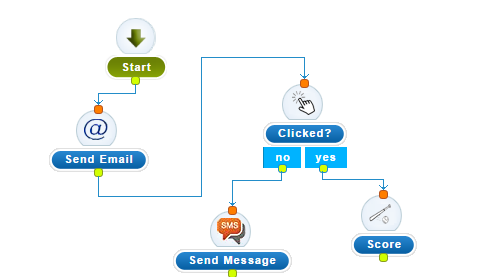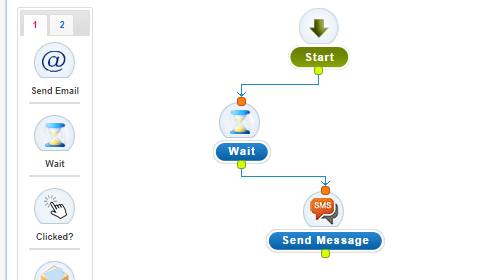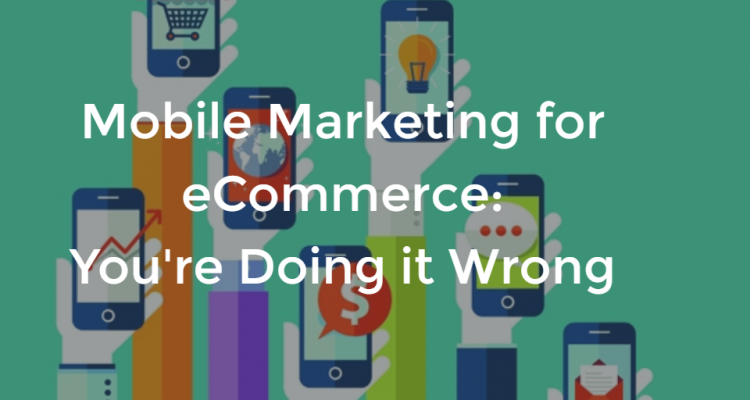Mobile Marketing for eCommerce: You’re Doing it Wrong
Some surveys claim that mobile marketing is the most difficult marketing practice for online stores. Is that really true, or is it just a matter of misunderstanding the technology? Where some companies see “difficult,” forward-thinking, growth-oriented companies see “opportunity for engagement.”
Even if your ecommerce business has started using mobile marketing to increase conversions, retention and overall engagement, chances are you’re doing it wrong. Mobile is still relatively new, and it’s different from other channels. Luckily, a few easy tweaks to your mobile strategy and implementation can take your mobile marketing from just okay to truly awesome.
Lessons from Gilt.com
When it comes to new technologies like SMS marketing automation, it’s essential to look at companies that are already doing it well. Gilt.com is a prime example. With mobile notifications about personalized sales like in the image below, they are leading the way for mobile ecommerce.

Gilt’s mobile strategy has three core facets:
- Customer Data: Mobile triggers based on complete customer profiles and contact-level analytics, not just one click or purchase
- Personalization: Hyper-personalized sales and reminders, sometimes segemented within larger sales
- Customer Power: Multiple options for customers to customize the online shopping experience, including the type and frequency of mobile alerts
Gilt does this through their mobile app, but you can easily practice similarly effective mobile marketing by combining your online store with a marketing automation platform, such as Shopify and Agile CRM.
Mobile Marketing That Gets Results
Integrating mobile into your ecommerce sales and marketing strategy doesn’t have to be difficult. Smaller ecommerce businesses can finally sell like the big guys. Follow these steps to integrate mobile into your omnichannel marketing strategy like any other channel, but with a special twist that recognizes the what, how and who of mobile marketing.
Build Customer Profiles
If you’re marketing over mobile to customers you don’t understand yet, then you’re doing it wrong.
Take the time to get to know your customers, understand your target audience, and use mobile in a way that works for them — it should feel natural, useful and exciting.

Building complete customer profiles is about much more than just tracking whether or not a customer responds to a text. Sometimes sending an automated SMS isn’t even necessary at a particular stage in the customer lifecycle and it might be more fruitful to adjust a lead score or add a tag so that you can engage them at the right time later (remember that you can use campaign nodes to decrease lead scores, not just increase them).
[Tweet “Effective #mobilemarketing comes from sending texts at the right time, not just sending texts”]
Integrate mobile marketing automation into your campaigns in a way that creates dynamic customer profiles with contact-level analytics and real-time alerts for your sales team, especially for your biggest or most consistent customers. Contact-level analytics will help you create personalized sales like Gilt’s, where mobile marketing sees the highest ROI. As you gather more and more contact data, you can use this data to segment users automatically for targeted sales and discounts. You can also add special tags, such as tagging based around interest in a particular brand or type of product in your online store, and then use those tags to trigger segmented nurture campaigns.
Treat SMS as…SMS
I’m going to keep this section short and sweet. If you’re treating SMS messaging like email marketing, you’re doing it wrong. Mobile marketing texts should always be brief and direct. No excuses.
[Tweet “If you’re treating #SMS messaging like #emailmarketing, you’re doing it wrong.”]
Personalize, Respond, Repeat
If you’re only sending texts as immediate, automatic responses to shopper behavior, you’re doing it wrong. (Even if they’re automatically personalized, you’re still doing it wrong.)
And if you’re only sending daily or weekly texts, then guess what? You’re still doing it wrong!

Successful mobile marketing is all about balance. Find the right balance between regular timing and responsive timing and you’ll be one step closer to complete customer engagement.
Take a lesson from Gilt and other major ecommerce brands (especially those offering time-sensitive sales) and use a combination of regular timing, such as texts offering a special weekend discount every Saturday at noon in the customer’s time zone, with responsive timing, such as a reminder SMS about an item still in the customer’s cart, sent the next day. This balance isn’t just about increasing engagement in general, it can also go a long way toward fighting shopping cart abandonment by creating a feeling of excitement instead of a feeling of annoyance.
[Tweet “Effective #mobile #marketingautomation is all about this basic balance”]
One final note on timing: remember that if you’re using Shopify to run your online store, you can use Shopify event triggers in mobile campaigns. Use those triggers to respond automatically to events such as when a new customer is created or an order is cancelled.
Mobile marketing isn’t just an option in today’s plugged-in, always-on world; it’s a necessity. Are you using texts to provide useful, enticing content that fits into your overall customer lifecycle, or are you choosing to do it wrong? With customizable mobile marketing apps available today at every price point, the choice is entirely yours. It’s time to start doing it right.

4 Comments
Loic
about 8 years agoHello, Your article about e-commerce and mobile marketing is pretty interesting. I completely agree with the part that says that you should treat SMS marketing differently than email marketing and keep it as short as possible. In the example you've shown on the article for GILT, it's barely 1 compelling sentence, this is how a good SMS notification should look like when it's sent by an e-commerce store.
Replyrohit aggarwal
about 5 years agoThanks for the information
ReplyGabriel Swain
about 5 years agoYou're very welcome! Thanks for sharing your feedback :-)
Reply